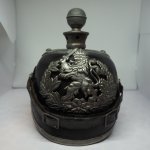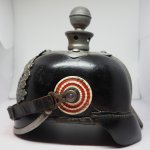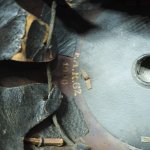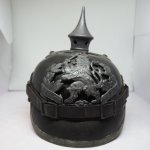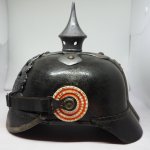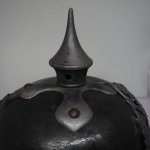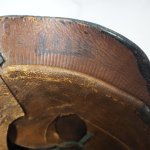Gabe,
Congratulations on finding the correct spike for your helmet. Thank you to Clovis for providing photos and everyone else for the pictures of your helmets and the variations of the wartime fixes.
As the war went past the expected end date, December 1914, the battlefield situation required new ways to meet the needs of the soldiers at the front, the Imperial German army had to come up with innovative ways to better protect its soldiers in the trenches. Ergo the M15 Pickelhaube and the need to improvise with the stock on hand for the issue to the troops.
Best regards,
John
